Meneath: The Hidden Island of Ethics
Terril Calder
2021
| 19 min 22 s
Stop-motion animation
English with some Anishinaabemowin
Selections and Awards
Official SelectionTIFF - Toronto International Film Festival, Canada (2021)
Special Mention - Canadian Film Institute (CFI) Award for Best Canadian AnimationOIAF - Ottawa International Animation Festival, Canada (2021)
Audience Award for Top Canadian ShortGIRAF Festival of Independent Animation, Canada (2021)
Canada’s Top Ten - ShortsTIFF - Toronto International Film Festival, Canada, (2021)
Official Selection - Generation 14plusBerlinale, Germany (2022)
Nomination - Best Animated ShortCanadian Screen Awards, Toronto, Canada (2022)
Prix spécial du jury- École NAD-UQACSommets du cinéma d'animation, Montreal, Canada (2022)
International Jury Special MentionsTricky Women International Women's Animated Film Festival, Vienna, Austria (2022)
Animation AwardYorkton Film Festival, Canada (2022)
Indigenous AwardYorkton Film Festival, Canada (2022)
Official SelectionAnnecy International Animation Film Festival, France (2022)
Audience Choice- Best Short Film Cinefest Sudbury, Canada (2022)
Trickster AwardSkoden Indigenous Film Festival, Canada (2022)
Official SelectionTampere Film Festival, Finland (2022)
More Selections and Awards
Meneath: The Hidden Island of Ethics dives deeply into the innate contrast between the Seven Deadly Sins (Lust, Gluttony, Greed, Sloth, Wrath, Pride and Envy) and the Seven Sacred Teachings (Love, Respect, Wisdom, Courage, Truth, Honesty and Humility), as embodied in the life of a precocious Métis baby. Brought to life by Terril Calder’s darkly beautiful stop-motion animation, Baby Girl’s inner turmoil is laid bare with unflinching honesty. Convinced she’s soiled and destined for Hell, Baby Girl receives Anishinaabe Teachings from Nokomis that fill her with strength and pride, and affirm a path towards healing. Calder’s tour-de-force unearths a hauntingly familiar yet hopeful world that illuminates the bias of colonial systems.
In the middle of Turtle Island, a Métis Baby Girl is born. Her childhood wonder is disrupted when Jesus appears and tells her about the so-called sins of humanity. Convinced she is soiled and destined for Hell, the abuse and racism she endures leave her riddled with self-loathing and fear. To quell her trauma, Nokomis brings light to the Anishinaabe Teachings buried deep within Baby Girl. For every alleged Sin, Baby Girl is given a Teaching that fills her with strength and pride, and affirms a path towards healing.
Brought to unflinching life by Terril Calder’s darkly beautiful stop-motion animation, Meneath: The Hidden Island of Ethics dives deeply into the innate contrast between the Seven Deadly Sins (Lust, Gluttony, Greed, Sloth, Wrath, Pride and Envy) and the Seven Sacred Teachings (Love, Respect, Wisdom, Courage, Truth, Honesty and Humility), as embodied in the life of a precocious little girl. Meneath (“island” in Anishinaabemowin) speaks to her journey but also leaves room for others to reflect on their own journey. It is a film that invites the viewer to contemplate our shared legacy. As a broader allegory, it offers an alternate lens that illuminates the bias of colonial systems.
Featuring the voice of Gail Maurice (Cardinal, Tricksters) and edited by award-winning artist Jeff Barnaby (Rhymes for Young Ghouls, Blood Quantum), Calder’s first-time collaboration with the National Film Board of Canada is a haunting tour-de-force about overcoming trauma and respecting one’s culture.
One liner
Meneath: The Hidden Island of Ethics charts a challenging journey for a precocious Métis baby girl as she contemplates her path to Hell.
Director's Statement
Lately, I’ve been obsessed with the new term “code-switching.” The zeitgeist brought a name to an issue that was consuming me. It was the idea of fitting in or making changes to seem like you do. I left my community (Fort Frances) at 18 years of age to pursue fine arts in Winnipeg. I’m now 52 and have realized that a great part of my “career path” was learning how to fit in. My ways were often interpreted as being unprofessional or uneducated. This constantly frustrated me, but part of me believed it. I learned how to fit in, or how to code-switch, to make people feel comfortable or maybe to be respected on their terms. I wanted to be accepted. This is a real barrier for many Indigenous people who can’t or won’t do the same to go to school or pursue their “career.” Pretending to be someone else is a lot to ask someone to do to fit in. I guess I ask myself now, and at my age… should we have to?
Willie J. Ermine, M.Ed., is an Assistant Professor with the First Nations University of Canada and is particularly interested in the “conceptual development of the ‘ethical space’–a theoretical space between cultures and worldviews.” I have mad respect for him and his traditional/academic research. He was scratching at the same issue as I was, but from an academic angle. I found his proposal to create Indigenous ethical spaces within institutions that could provide respite from the ignorance that many of us face so telling of the struggles we deal with in academic settings. Christian ethics are buried so deep in “Canada” that many see them as the base set of ethics that we build upon. They are the default set, and everything else is flawed or primitive. This is “missionary” thinking, to subconsciously treat us as heathens regardless of our faith. I got to wondering if all people got that. I don’t think they do, and these concepts are racist, wearing the guise of the Saviour; thinking I am a “good person” and I want that for others, but with that comes an unyielding definition of “good person.” I wondered if they knew there was an accommodation on our side? That their math about us didn’t add up because they didn’t have the tools to understand?
My film, Meneath: The Hidden Island of Ethics, would try to take this on, in the form of a little girl. A little girl who has a secret voice in her head helping her navigate the world as Métis. I’m letting the viewer in on that voice to help gain a better understanding of a different value system. Her journey is a story of healing, of acceptance and reconciliation after trauma.
Terril Calder, Métis
I grew up as a Calder from the Fort. Fort Frances, Ontario, is a small community where you don’t have to explain who you are. We are the Métis—we grew up in between the lines. Not completely white and not completely Native. The word Métis means “mixed blood”. That can be deceptive for some who believe that mixed bloodlines make you Métis. They do not. To be a recognized Nation, you need to have a distinct culture and language, and to be recognized as Métis you need to be connected to Louis Riel’s people of the Red River Nation, who had both. Our Nation/Tribe was Métis. My people are from the Red River Nation and fought in the Métis rebellion. They moved to the Fort after the civil war, and after their community was displaced. There was an adhesion to Treaty 3 to include my clan. So many settled on reserve at that time, and some did not. It was a bone of contention in my community, and it still is to this day. It’s a complicated issue. Because we settled there with the Anishinaabe (Ojibwe), who we partnered with and very often shared families with, we had a distinct language that was not Michif. It is a misconception that Michif was our only language. My clan spoke Bungee and Anishinaabemowin. Bungee was a mix of Gaelic and Cree; a language that is now lost. My title (Orkney Cree Metis) denotes my bloodline of Scottish and Cree mix. However, my Nation remains “Métis.”
The last name, Calder, is Scottish. It can be traced back to the beginning of the fur trade. When creating Meneath and the two voices, I really debated over who would embody the “Indigenous” voice. It is an easier read to make her Cree, because there is not a lot of knowledge about the diversity in my Nation, but in my gut I knew she had to be Anishinaabe. I feel a disconnect to both Cree and Scottish culture as my community evolved to be more Anishinaabe. We’ve been mixing our blood for centuries. However, that does not make us more Métis or more Anishinaabe. My mother is Norwegian, and she grew up outside of Fort Frances in the bush. My story is unusual. I was raised in my community and not in a suburb of Toronto, and my connection to my community fuels my curiosity and art. It has never been something I had to adopt or seek out. We were raised with heirlooms of culture, as the Métis culture is a mix of European and Ojibwe-Cree and, in my case, Anishinaabe. We have always lived off the land and our fish are a treasured staple. As time changes, our rights change, our acceptance changes. However, we remain Calders from the Fort.
Trailer
Excerpts
Images
Loading...
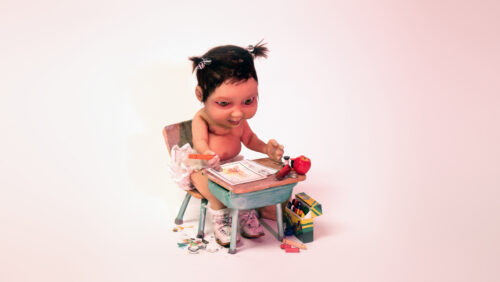
Download
Loading...
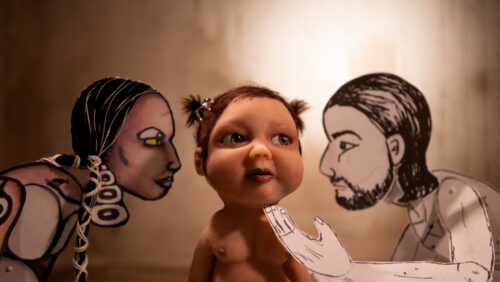
Download
Loading...
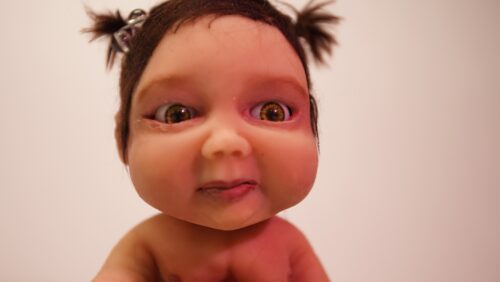
Download
Loading...
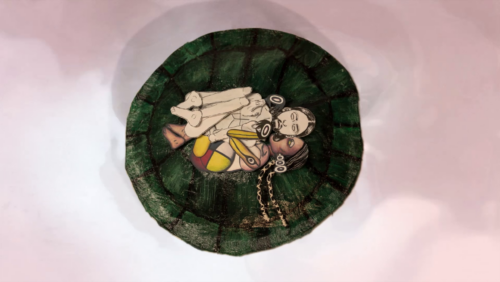
Download
Loading...
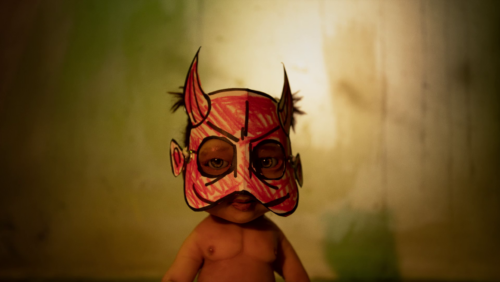
Download
Loading...
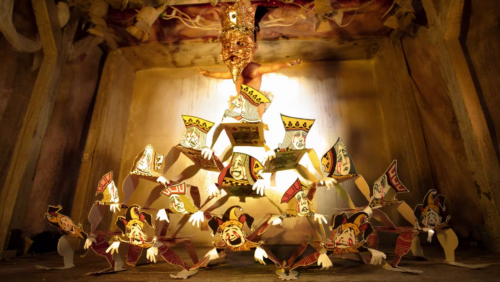
Download
Loading...
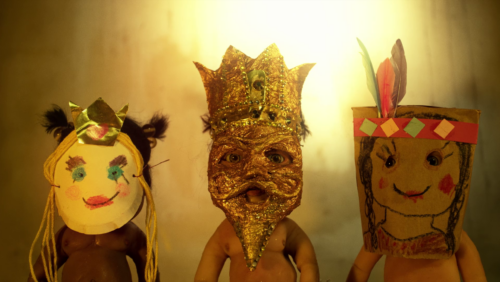
Download
Loading...

Download
Loading...
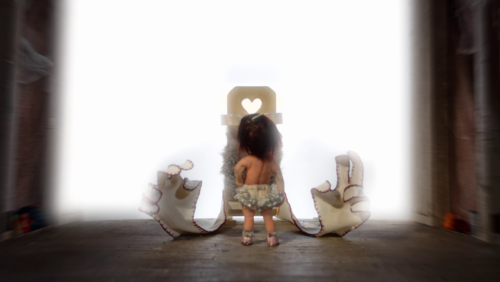
Download
Poster
Team
Terril Calder
Writer, Director and Animator
Photo
Photo : Julie Artacho
Jelena Popović
Producer
Photo
Jason Ryle
Consulting Producer
Photo
Michael Fukushima
Executive Producer (NFB)
Photo
Photo : David Fine
Rob McLaughlin
Executive Producer
Photo
Photo : Emily Cooper
Credits
Written and Directed by
Terril Calder
Producer
Jelena Popović
Consulting Producer
Jason Ryle
Executive Producers
Michael Fukushima
Robert McLaughlin
Nokomis
Gail Maurice
Jesus
Kent McQuaid
Baby Girl
Lake Delisle
Narrator
Terril Calder
Editor
Jeff Barnaby
Consultant
Darlene Naponse
Design, Animation and Compositing
Terril Calder
Armature
Erik Goulet
Puppets, Sets, Props, Costumes
Terril Calder
Traditional Costume – Baby Girl
Cassandra Cochrane
Lighting Consultant
Nadya Kwandibens
3D Animation
Zane Kozak
Music Composer
Judith Gruber-Stitzer
© 2021 National Film Board of Canada (SOCAN)
Musicians
Kate Bevan-Baker, violin
François Jalbert, guitar
Sheila Hannigan, cello
Music Mix
François Arbour
Geoffrey Mitchell (NFB)
Sound Design
Sacha Ratcliffe
Foley
Karla Baumgardner
assisted by
Rod Thibeault
Foley Recording
Geoffrey Mitchell
Voice Recording
Luc Léger
Re-recording
Jean Paul Vialard
Shelley Craig
Technical Director
Eloi Champagne
Animation Technical Specialist
Randall Finnerty
Online Editor
Serge Verreault
Closing Credits
Cynthia Ouellet
Technical Coordinators
Luc Binette
Mira Mailhot
Studio Administrator
Rosalina Di Sario
Senior Production Coordinator
Dominique Forget
Studio Coordinator
Faisal Moula
Marketing Manager
Judith Lessard-Bérubé
Marketing Coordinator
Jolène Lessard
Anishinaabe Syllabic Chapter Titles
James Vukelich
Anishinaabemowin Translation
Margaret Pollock
Thanks
Willie J. Ermine, M.Ed.
Tantoo Cardinal
John Christou
Jamie Whitecrow
Brandon Michael Mohammed
Emry Calder
Amanda Roy
Valdimar Brandsson
Adeeb Khan
Geeta Sondhi
Heather Haynes
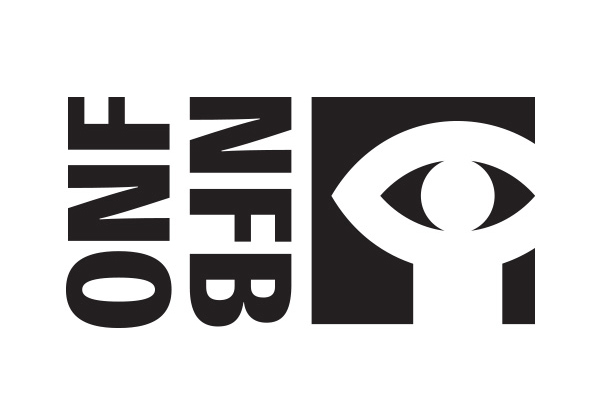
© 2021 National Film Board of Canada
Media Relations
-
About the NFB
The National Film Board of Canada (NFB) is a leader in exploring animation as an artform, a storytelling medium and innovative content for emerging platforms. It produces trailblazing animated works both in its Montreal studios and across the country, and it works with many of the world’s leading creators on international co-productions. NFB productions have won more than 7,000 awards, including seven Oscars for NFB animation and seven grand prizes at the Annecy festival. To access this unique content, visit NFB.ca.